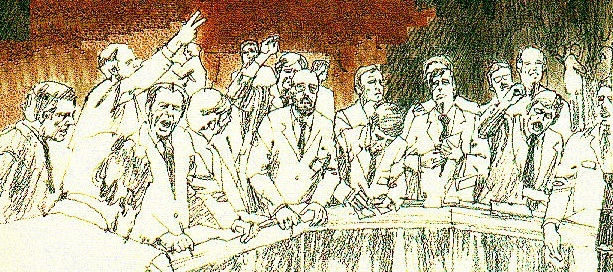Nonlinear Complexity – Too Much for Most People to Comprehend
QUESTION: Dear Mr. Martin Armstrong.
Good day to you Martin. I know you are a very busy man, but I still like to send you emails time to time, hoping that you may read my email and respond to me. In regards to your recent post about the theory of Non-linear intervention, I was quietly amazed at the fact that I recently had the same idea as yours.
In my math class, my teacher taught us a different way to solve quadratic equations, and it was completely done by original algebra rules, not with the formulas we used to be given in high school. My math teacher said that most teachers do not use this method other than using special case formulas because its non-linear solution and that messes up people’s brain.
Also in my Economics class, we are learning about the basics of supply and demand and here we again use the straight linear method, such as ceteris paribus. I was sincerely curious to know if that is true for everything we do.
You have shown me a clear path in every aspect of this world. But I have a question about the Euro, I too have lost so much money by just looking at the fundamentals and execute trades and now I have learned that the fundamentals do not matter the most to move the market unless its very significant incident. (is that correct?) For instance, the Euro rallied whenever there was a chance to go up, and as a person who was only looking at the fundamental side, it was very odd and frustrating for me to watch it go up, but on the other hand, the technical communities were chanting a song that EUR/USD will spike to 1.2000 and so it did. I am still a fool who cannot read the market.
Mr. Martin, can you tell me where you first looked to find answers from the market? Did you study the technical first or the history? Do you think the current Catalonian independence is a contagious incident for Europe?
I thank you for teaching us great deals all the time. It is such a headache for me to collide real knowledge from you and inexperienced knowledge from school lectures, but I live my days with such joys to tell all these stories to my parents.
Best regards.
C
ANSWER: What you are describing is what set me in the right direction. In physics, the professor said that nothing is random and then I went to economics class and they said everything is random so don’t waste your time trying to forecast it. Since economics claimed the economy was random that really meant that the government can manipulate society to create the perfect world – i.e. Marx & Keynes.
 However, it was 9th grade and in history class, the teacher played Toast of New York, which was the attempt to corner the gold market in 1869. I was working part-time in a bullion coin/store back then so I knew gold was fixed at $35. How was it possible that gold was $162 in 1869? That was certainly not linear. Something was just not right.
However, it was 9th grade and in history class, the teacher played Toast of New York, which was the attempt to corner the gold market in 1869. I was working part-time in a bullion coin/store back then so I knew gold was fixed at $35. How was it possible that gold was $162 in 1869? That was certainly not linear. Something was just not right.
In mathematics and physical sciences, a nonlinear system is a system in which the change of the output is not proportional to the change of the input. Therefore, nonlinear problems are of great interest to engineers, physicists, and mathematicians because most systems are inherently nonlinear in nature such as weather, climate, disease, and life itself. Nonlinear systems often appear to be chaotic, unpredictable or counterintuitive. This is beyond the imagination or understanding of the average individual. Hence, this stands in opposition to the much simpler linear system which the average individual understands. This is why most theories are based upon whatever trend is in motion will stay in motion.
The fundamental analysis fails every time because it is trying to reduce the market behavior to a linear theory of simplistic logic. If people fear banks and government, some will buy stocks, others property, and still others gold. Each will buy whatever they “feel” most comfortable with. The trend is to sell public assets and move to private, yet all will benefit.
Fundamental analysis is therefore worthless because what moves a market is “belief” not logic. That is why real traders coined the phrase: Buy the rumor but sell the news! It does not matter what the fundamentals are if the people believe something, the markets will move accordingly even when that rumor turns out to be false.
As far as the Catalonian independence becoming a contagion, it already is. We see Scotland saying they want another vote. Reunification demonstration for Brittany in France began in 2014 with the turn in the War Cycle. In France, there are demonstrations over the Brittany reunification but the Western press were told not to show it to try to prevent a contagion which is starting in Europe. We will see the same thing rise in Italy going into the May 2018 elections.


